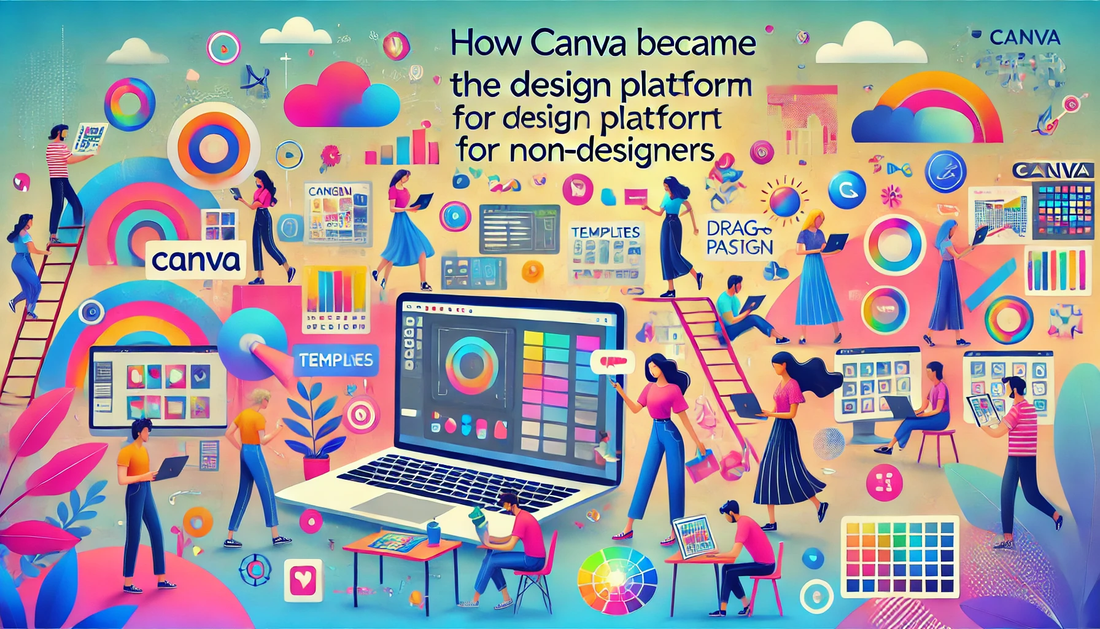In the world of startups, the ability to pivot and adapt is crucial. Canva, a design platform that has revolutionized the way non-designers create, is a prime example of this adaptability. Its journey offers valuable lessons for startup founders.
Canva's success story is not just about a great product; it's about understanding the market, leveraging technology, and creating a user-centric experience. Let's delve into how Canva became the go-to design tool for non-designers and what startups can learn from it.
Understanding the Market
Canva's founders identified a gap in the market: the need for an easy-to-use design tool for non-designers. They realized that many people lacked the skills or resources to use complex design software.
For startups, understanding your target audience is key. Conduct thorough market research to identify pain points and unmet needs. This will help you create a product that truly resonates with your audience.
Leveraging Technology
Canva leveraged cloud technology to offer a seamless, accessible design experience. Users could create designs from anywhere, without the need for expensive software or hardware.
Startups should embrace technology to enhance their offerings. Consider how cloud computing, AI, or other technologies can improve your product and make it more accessible to your audience.
User-Centric Design
Canva's intuitive interface is a testament to its user-centric design philosophy. The platform is designed to be simple and accessible, allowing users to create professional designs with ease.
For startups, prioritizing user experience is crucial. Design your product with the end-user in mind. Conduct usability testing and gather feedback to ensure your product is easy to use and meets user needs.
Building a Community
Canva has built a strong community of users who share their designs and offer feedback. This community has been instrumental in Canva's growth and success.
Startups should focus on building a community around their product. Engage with your users, encourage them to share their experiences, and use their feedback to improve your offering.
Effective Marketing Strategies
Canva's marketing strategy has been pivotal to its success. The company uses a mix of content marketing, social media, and partnerships to reach its audience.
For startups, a well-rounded marketing strategy is essential. Leverage different channels to reach your audience, and tailor your messaging to resonate with them. Consider partnerships to expand your reach and credibility.
Scalability and Growth
Canva's platform is designed to scale, allowing it to grow rapidly and accommodate millions of users. This scalability has been key to its success.
Startups should design their products with scalability in mind. Ensure your infrastructure can handle growth, and plan for future expansion. This will help you avoid growing pains and ensure long-term success.
Continuous Innovation
Canva continues to innovate, adding new features and tools to meet the evolving needs of its users. This commitment to innovation keeps users engaged and attracts new ones.
For startups, continuous innovation is crucial. Stay ahead of industry trends and be willing to adapt your product to meet changing demands. This will help you maintain a competitive edge.
Actionable Takeaways for Startups
- Identify and understand your target market's needs.
- Leverage technology to enhance accessibility and usability.
- Prioritize user experience and gather feedback for improvements.
- Build a strong community around your product.
- Develop a diverse and effective marketing strategy.
- Design your product with scalability in mind.
- Commit to continuous innovation and adaptation.
Canva's journey from a simple idea to a design powerhouse is inspiring. By understanding the market, leveraging technology, and focusing on user experience, Canva has become the design platform for non-designers.
Startup founders can learn from Canva's success by applying these strategies to their own ventures. With the right approach, your startup can also achieve remarkable growth and success.
Remember, the key to success is not just having a great product, but understanding your audience, embracing technology, and continuously innovating. With these principles in mind, your startup can thrive in today's competitive landscape.










